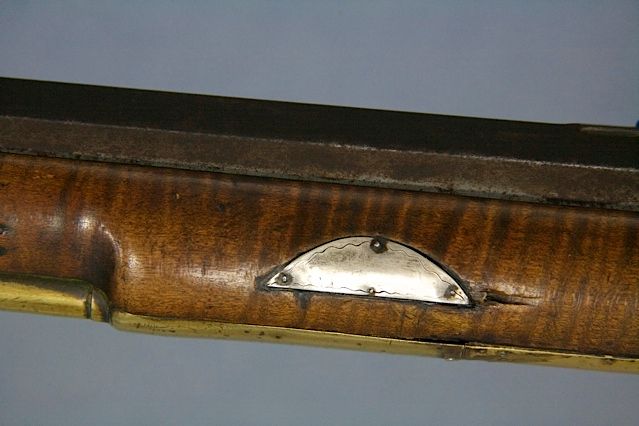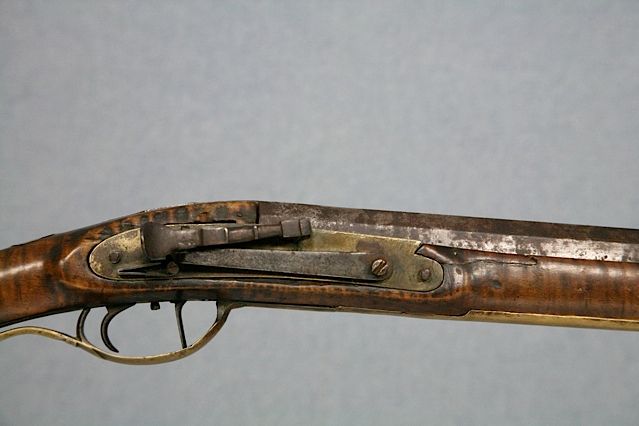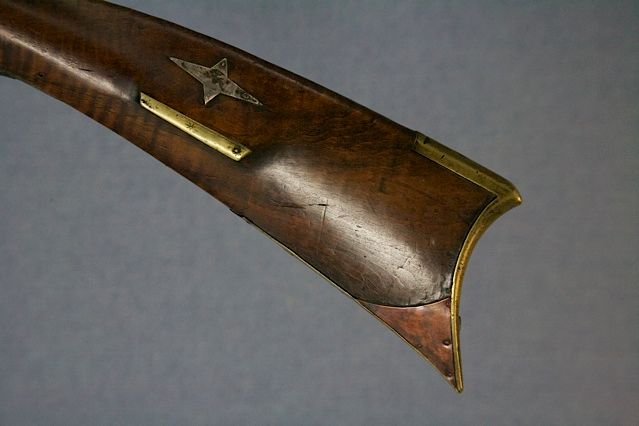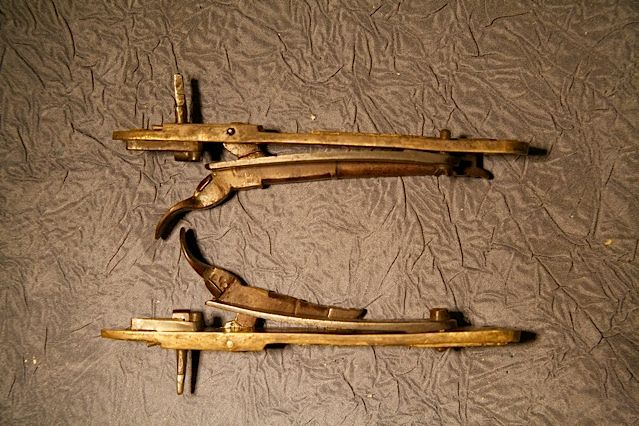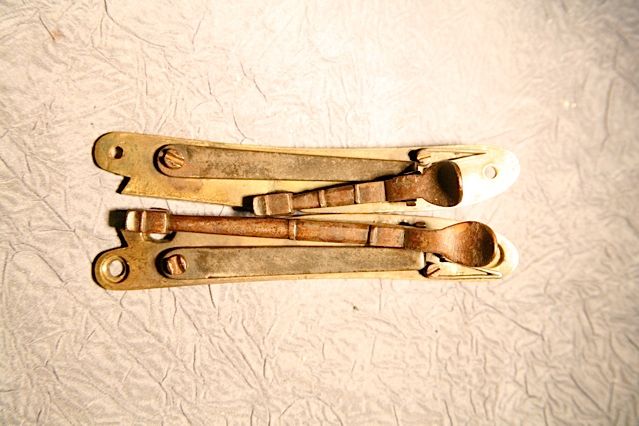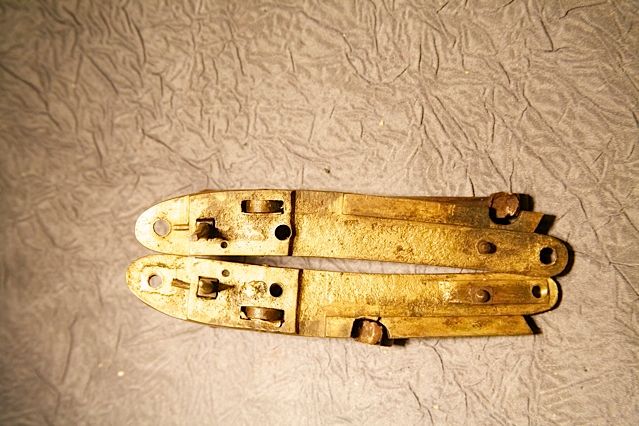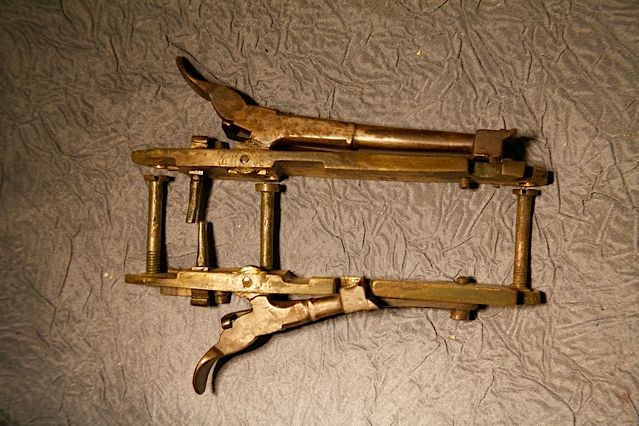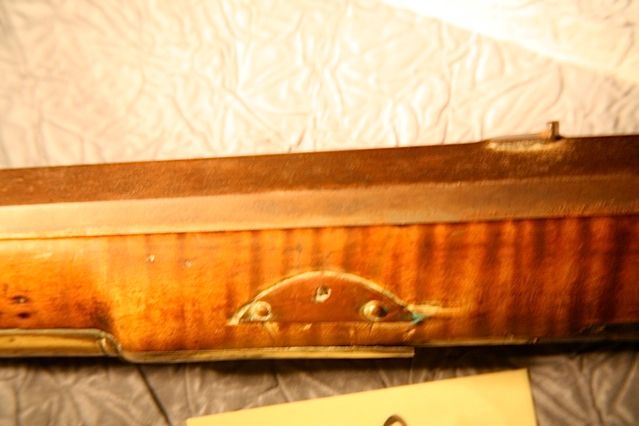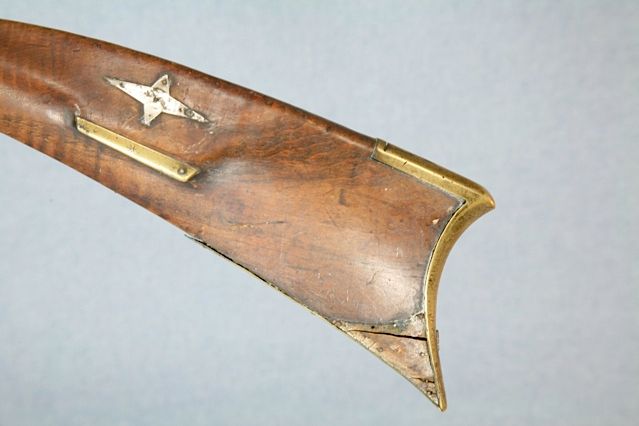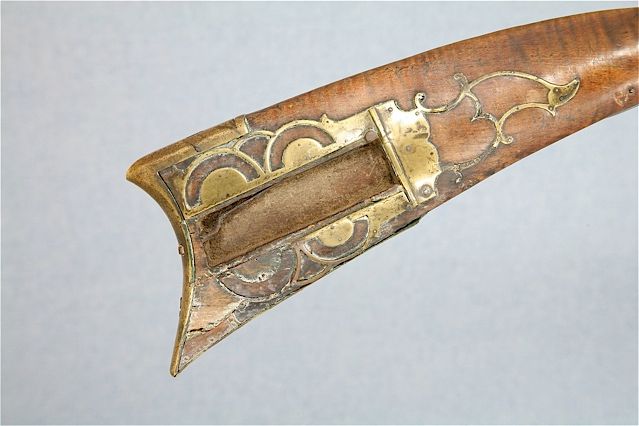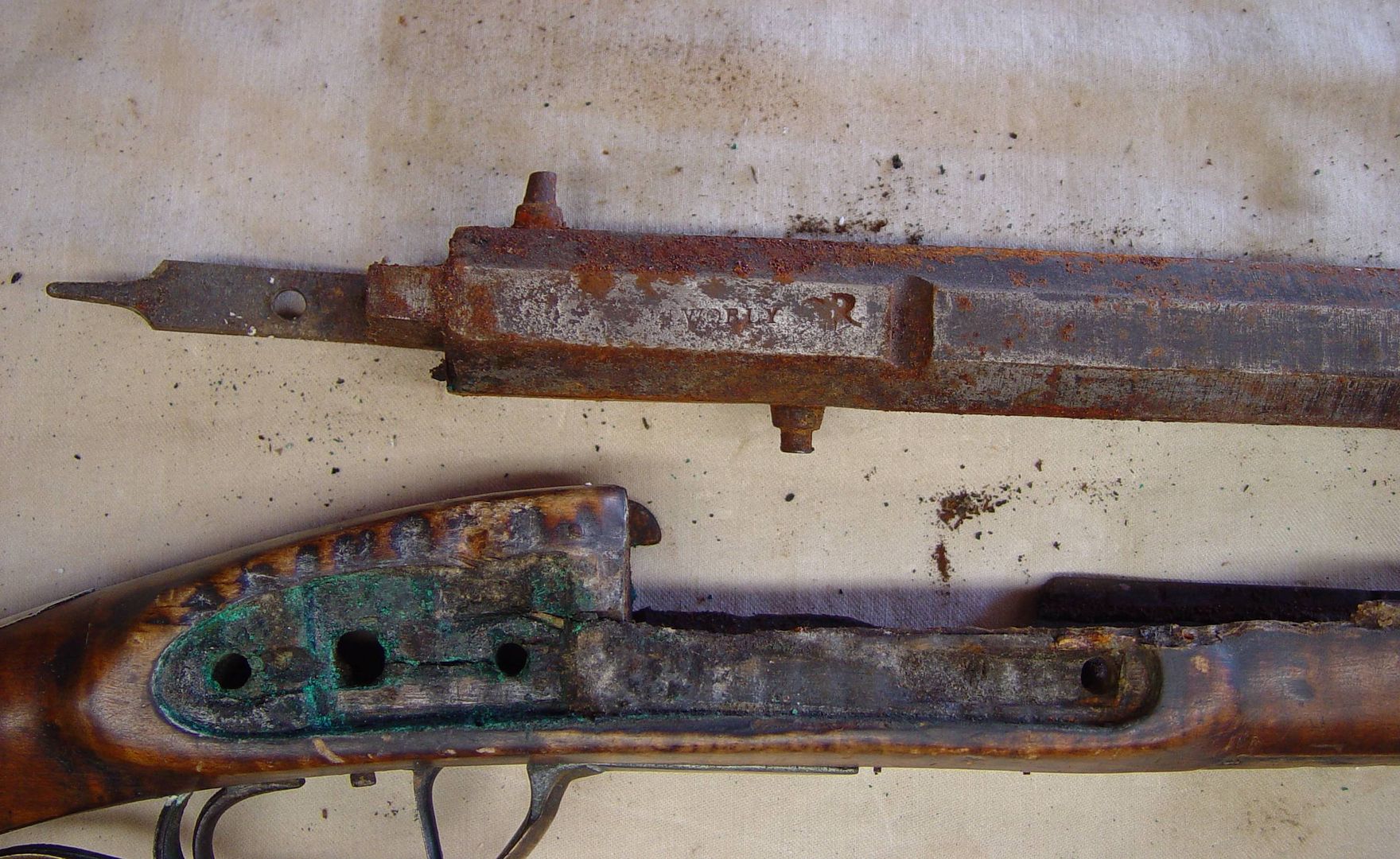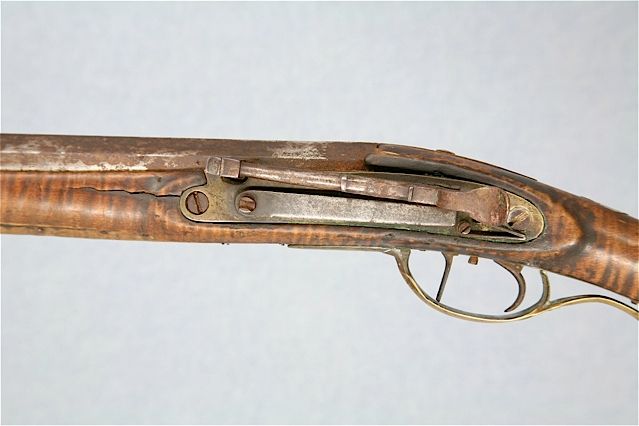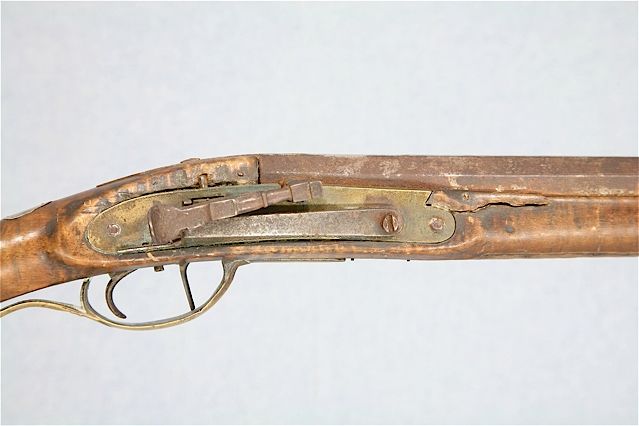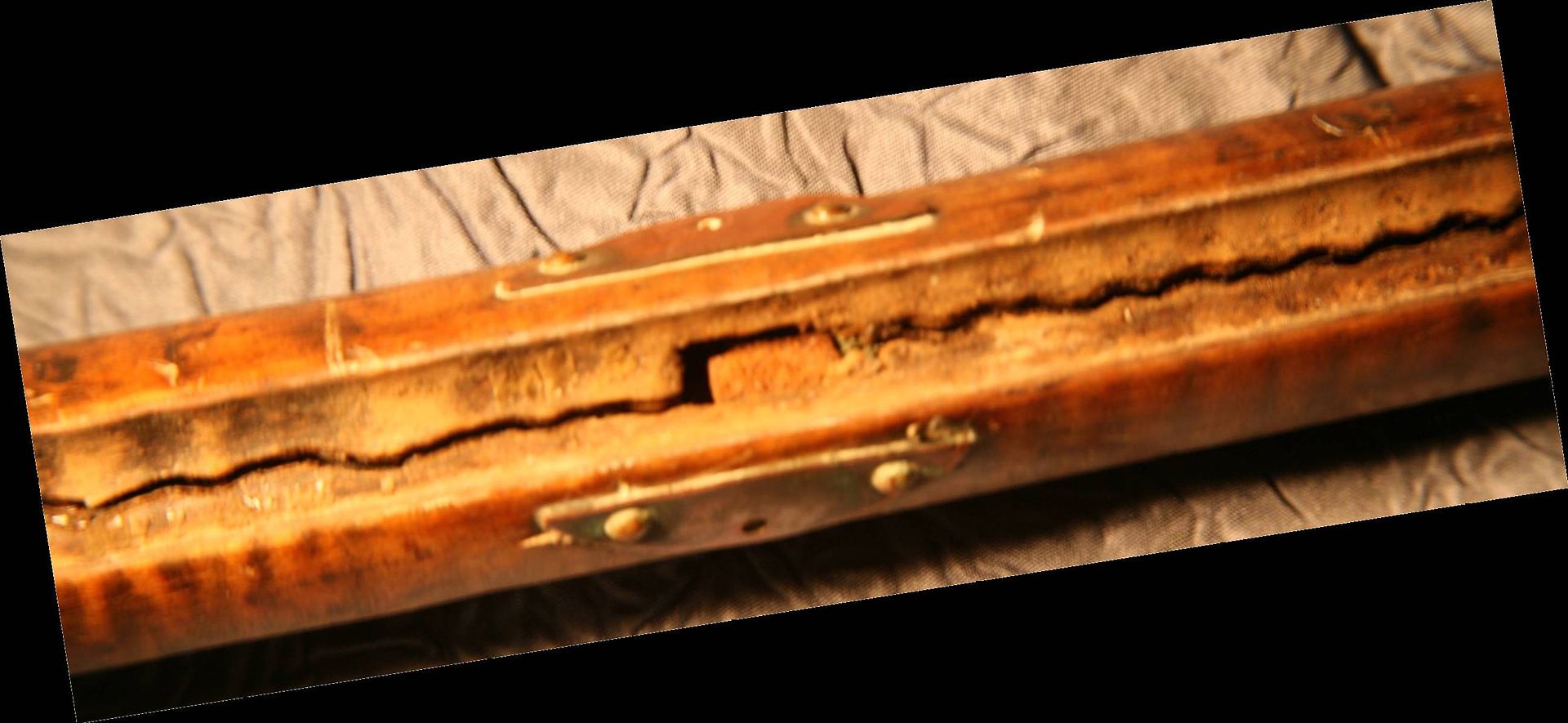Note: We present both before and after photos here of the same rifle. Some photos will be duplicates as will some of the documentation. Rifle ID numbers will remain as two separate rifles representing the original and the stabilized piece.
Admin.
======================================================================
BBL length 41 7/8". Total length 56 1/2". Breech diameter 1 3/64".
BBl diam muzzle 1"
Cal miked at muzzle .499. Groove depth .030
Twist 1 turn in 45".
Weight 10 lb 4 oz.
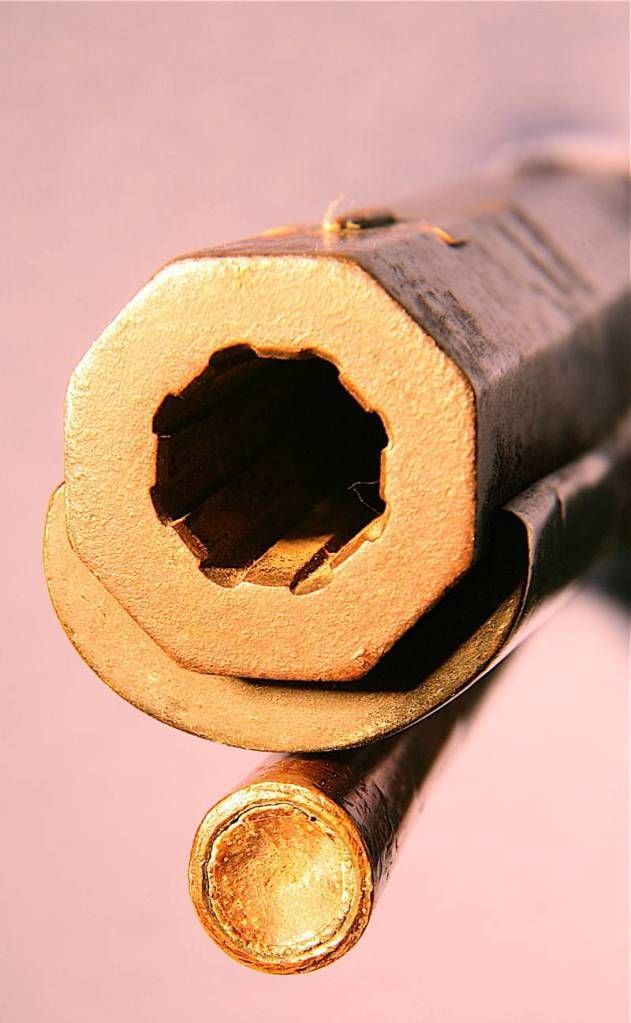
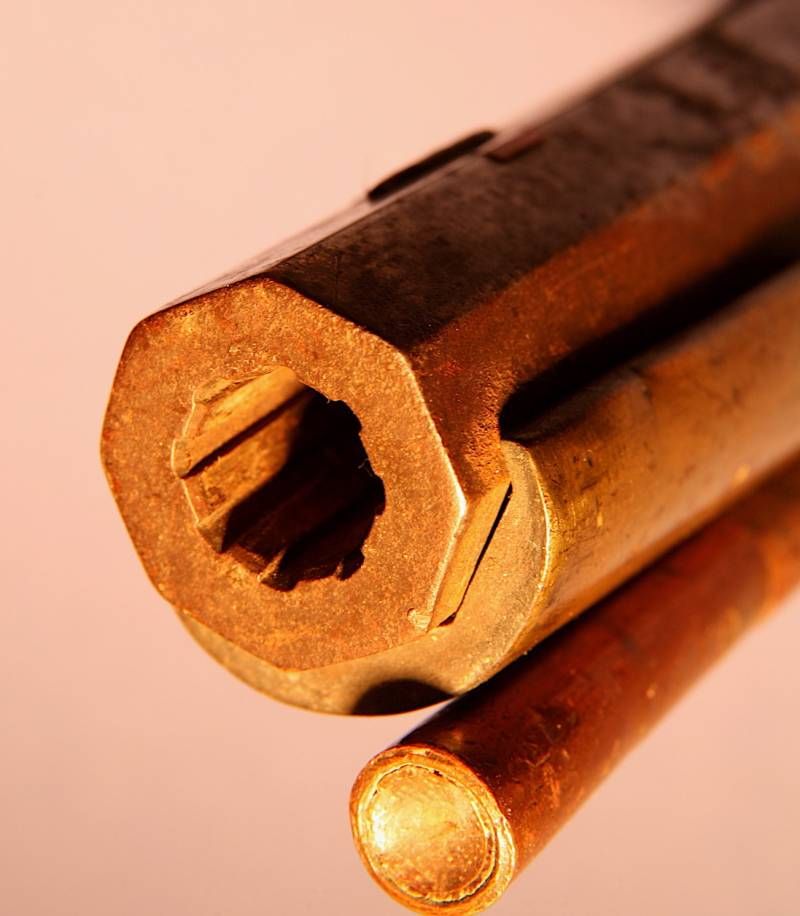
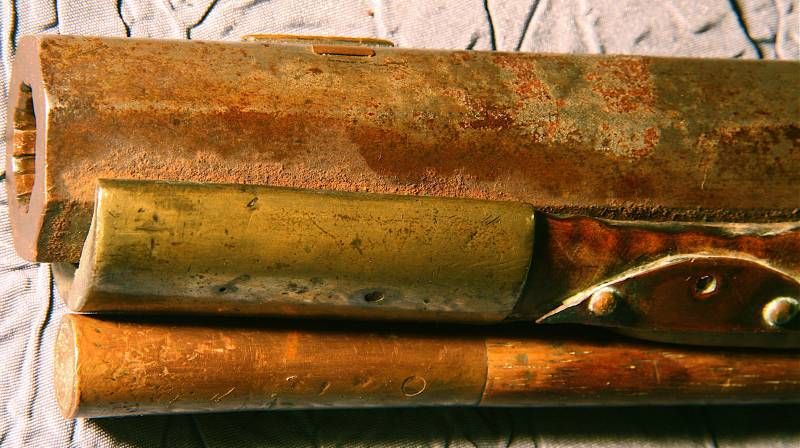
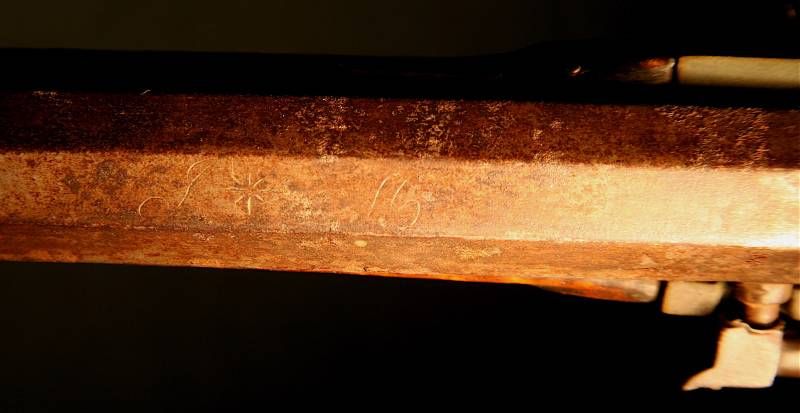
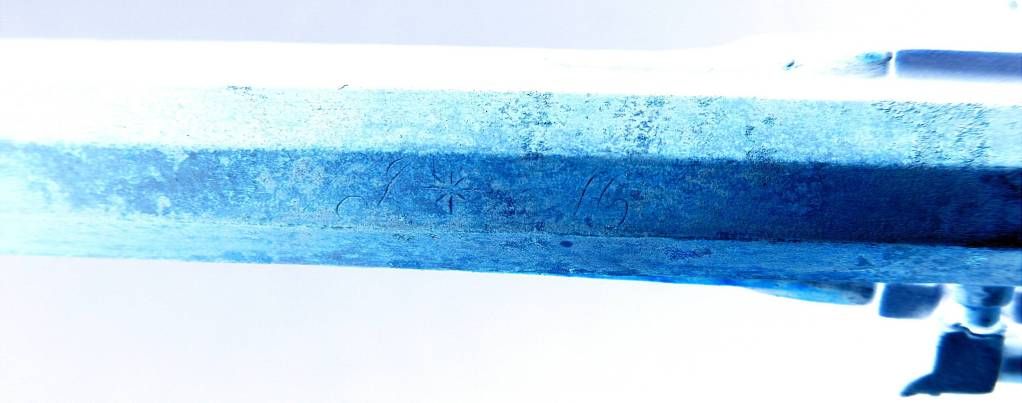


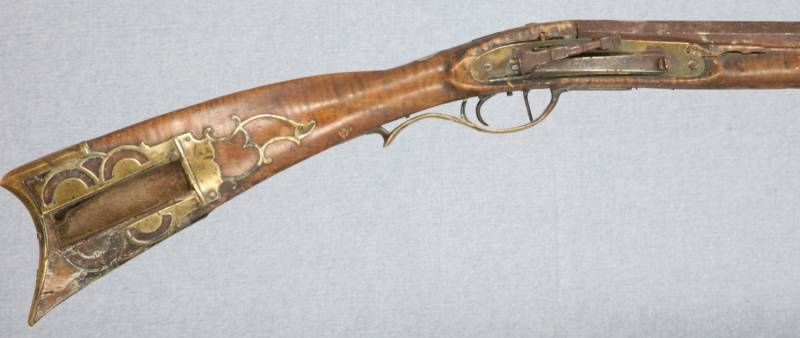
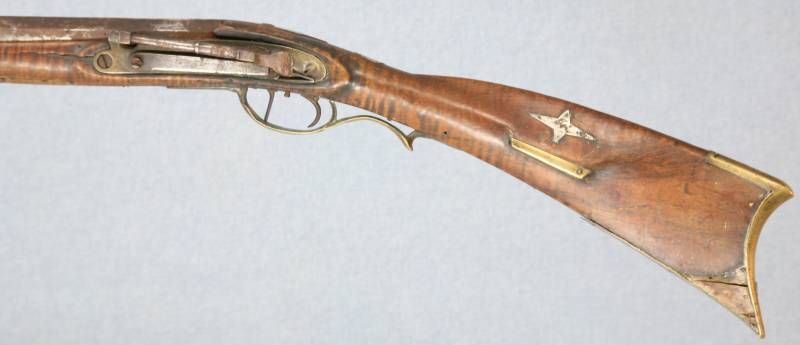


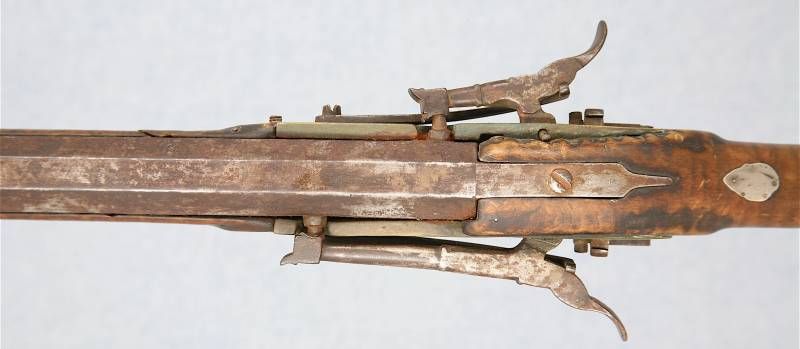
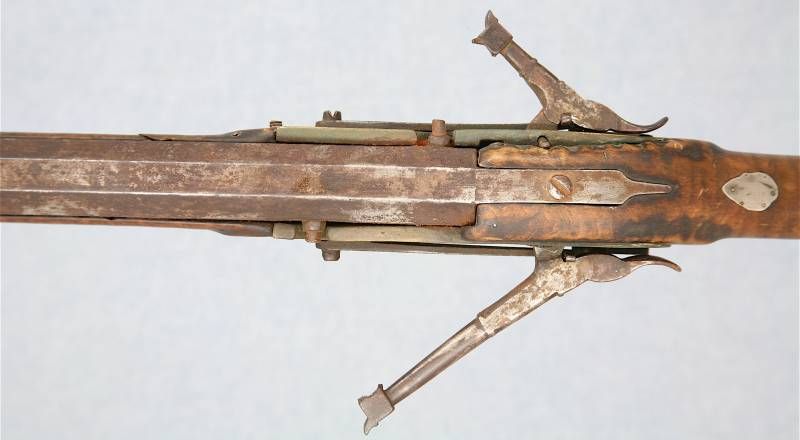

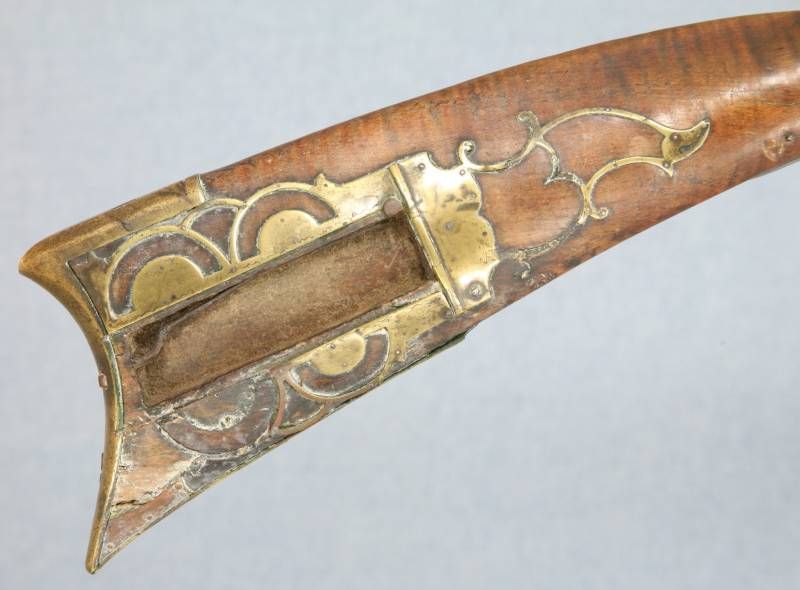
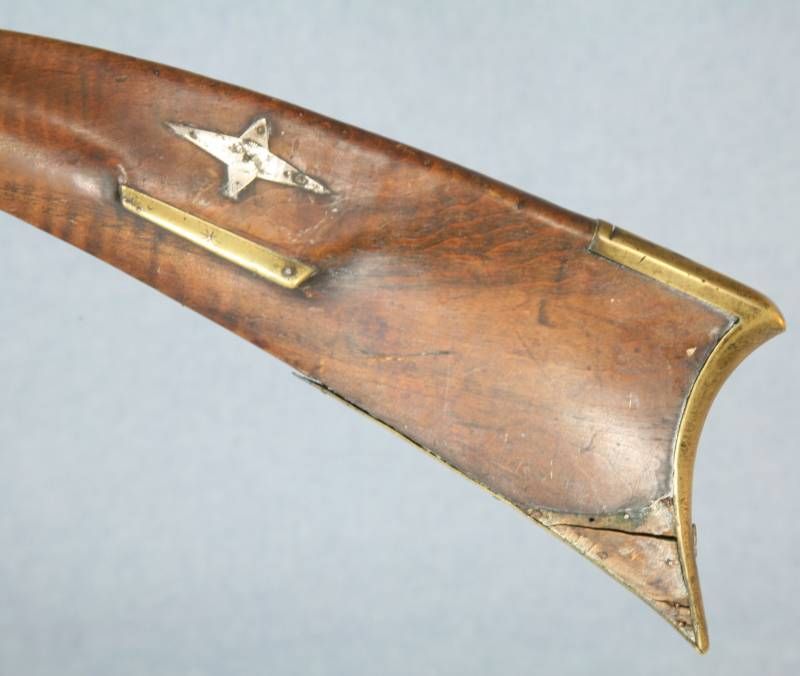
Comments:
Well gentlemen... Some of you have wished for attic quality and here it is! And a true duplex at that. Unless someone else made hammers like Sam I doubt we'll have much of a question as to his hand. The signature is as good as I could bring up and appears similar to my Morrison.
Given the fact that this rifle is a true survivor having obviously been through so much trauma I'm really not too sure that I wouldn't stabilize the damage and present this piece with all her wounds proudly on display. I believe we're seeing evidence of the quality and diversity of Samuel Morrison.
--------------------------------------------------------------------------------------------------------------------
Great double rifle in attic condition, no questionable restoration or alterations. I accept XXXX's knowledgeable comments as to attribution. Morrison put a lot of metal into his side hammer locks. With two heavy locks, I can see why he built it without a patchbox lid. Great, honest example of Morrison's mechanical abilities and workmanship, and a good candidate for the virtual museum.
XXXX, does this rifle have a single barrel with staggered charges and percussion nipples, as nipple placement suggests, or is it a superposed gun? The forestock looks so "normal" that it appears to have a single barrel. Can you clarify, or post a picture of the muzzle, to make sure all later museum readers fully understand the construction of this rifle? Being from the Midwest, I don't fully understand all those eastern terms such as "duplex" when used in conjunction with a rifle.
-------------------------------------------------------------------------------------------------------------------
Single barrel double charge. I'll see if I can get a muzzle photo for presentation.
Duplex? I sometimes use the term (incorrectly) when speaking of a double rifle as I really don't like to use the German terms for multiple barrel firearms. In this case I believe that "duplex" is about as correct as one could hope to be. So... Double charges in the same barrel at the same time... Duplex. Triplex for three etc.
I assume that you weren't serious about the patchbox as it certainly had a lid at one time. I'd be interested on your take about restoration. For myself I'd only stabilize the piece as to do anything would deny and erase her past.
-----------------------------------------------------------------------------------------------------------------
Your comment "stabilize" is a little vague and open to interpretation on a piece like this...so you might want to be more specific. When I see a significant rifle like this, in its current condition, I would have no qualms about a reasonable level of restoration by a competent longrifle restorer like Brian LaMaster or others who works at that level. Some of the lost inlays and shrinkage cracks probably occurred in the last century...disconnected from its working days or even working era...so they are like alterations that don't really relate to its working life or early history.
That said, I would replace the wear plate below the forestock grip area, also the large inlay missing from the backside toe area, and the missing patchbox lid and piece missing from the rear of the lower side leaf. The shrinkage crack in the toe area I'd fill, since it is masked by the replaced lower side leaf on the front and the missing toe inlay on the reverse. The shrinkage cracks in the side facings up around the lock plates are unsightly and may cause loss of wood eventually if not stabilized...so I would probably have them "adjusted" for a tight glue joint and better appearance. Missing slivers along the forestock are a personal decision, but I love to see old missing slivers where the edge of the break is worn smooth from years of handling after the sliver broke out...and I'd probably leave those areas alone. They don't appear to be large enough to detract from the gun's appearance, and if they show smoothing wear, they really are part of the history of the gun. If they are fresh breaks with "white" edges that are sharp, I'd consider filling them back in. That's my two cents...and if you can't make up your mind, just sell the gun to me so you don't have all the emotional stress over the issue...and let me be stressed out over it! Yeah, the crack about the patchbox lid was just to poke fun at an otherwise exceptional gun...you know, to keep the gun's carrying weight down after mounting those two "ten pound" side slapper lock plates.
---------------------------------------------------------------------------------------------------------------------
"Your comment "stabilize" is a little vague and open to interpretation on a piece like this."
Totally on purpose!
The degree and the extent of any work is up to the owner, not me. I'd tend to do nothing that would substantially change the rifle, but that's just my opinion.
All the same we seem to agree. This is a significant rifle.
+++++++++++++++++++++++++++++++++++++++++++++++++++++++++++++++++++++
Rifle # 120908-1
This is a very nice and unusual rifle, and the owner wanted it stabilized to prevent further deterioration. To that end, none of the work I did was disguised to be invisible, but done to look like a good simple repair.
There were several issues that needed attention, but the primary issue was a crack through the web between the ramrod and barrel channels. This crack had split apart fairly significantly, and ran from the muzzle cap practically all the way back to the ramrod entry pipe. Basically, the forestock was completely split in half down the middle, following the grain of the wood, and was being held together by the muzzle cap, a couple pins, and the ramrod entry pipe.
Another issue, was originally, the barrel would be removed from the stock be removing the tang bolt, then, sliding the barrel forward to release the barrel under lugs from the stock pins, but this feature had been lost at some point. The original forearm inlays that would have covered the stock pins were missing, and copper inlays were put in their place, with holes in them to slide the stock pins in and out, as would usually be found on a rifle.
The other primary issue was that the patchbox door was missing. Also missing was the back half of the lower PB side plate and a few of the narrow pieces of brass there, and also in the PB finale. Some of the brass was just missing, or lost, while most of the narrow pieces had been dissolved by green verdigris. The green verdigris had also found its way under both of the brass lock plates, and was starting to fill the spaces between the lock plates and the wood there.
Also, at some point the toe of the stock had been broken, and had been repaired with a couple nails and a copper inlay on both sides of the stock over the break. The copper inlay was still on the patchbox side, but was missing from the cheek piece side.
There was also a couple other pieces of wood cracked out of the stock. The pieces from either side just ahead of the locks were still there, tacked onto the stock with small nails. I re-attached these more permanently, but didnít try to conceal the original crack completely. Other cracks were glued to prevent further splitting and the few old splintered out pieces of wood along the forearm were left as is.
I did a little tune-up on the locks to help them to be a little more reliable, and also cleaned all the active rust off the barrel, and did some other little odds and ends. At this point, this rifle should be good for another couple hundred years of enjoyment by admirers and collectors!
This rifle would have been a real adventure to shoot! It holds two loads, one loaded directly on top of the other. To shoot it, if you cock the left hammer and pull the trigger, it shoots the top load. Then, if you cock the right hammer and pull the trigger, it shoots the bottom load. However, if you load both loads and cock both hammers and pull the trigger, it shoots both loads simultaneously,,, or more or less simultaneously!
Original Photos:













Combination Photos... Before & After Stabilization:
